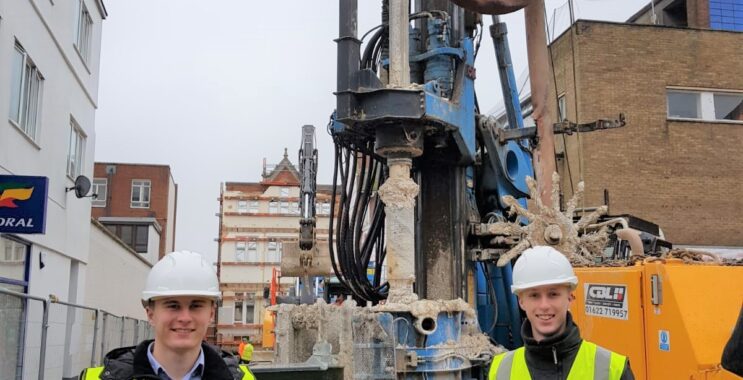PRESS RELEASE – YOUR PEOPLE ARE YOUR BUSINESS

According to Government figures, construction generates almost £90 billion annually to the UK economy and employs around 2.9 million people, the equivalent of about 10% of all jobs in the UK.
The industry faces several challenges as it looks to the future, but arguably the most urgent is plugging the skills gap. And, Managing Director of Superstructures, James Potter, is philosophical about the reasons behind the skills shortage.
“The construction industry has been suffering a skills gap ever since I started working in it. We all complain about the difficulties in recruiting new people to grow our businesses, or in some cases just to cope with the current workload, but very few invest the time and energy to solve the problem.”
So, what does he think is the answer?
“Young people are the future of our industry, and I think one of our first steps must be to educate parents, teachers and students about the fantastic opportunities in construction. We need young people to be considering ambitious careers in this industry as early as possible, rather than falling into it by accident when they’ve completed their education. Once we have the interest of young people, we need to invest in them and develop them to their full potential.”
Superstructures has been taking proactive steps to tackle the issue.
“We have developed a close relationship with Suffolk One sixth-form college in Ipswich, where we have regular contact with students. We hold practical workshops with them, introduce them to structural engineering and offer work experience placements.
“For those that then decide a career in engineering is for them, through our apprenticeship programme, we can offer them a job. This enables them to work with us full time, whilst they complete their degree course at a local university.
“It’s a win-win situation. It gives us the opportunity to nurture our own ‘home grown’ talent, while the student can work to gain their qualifications at the same time as accruing huge amounts of real-world experience, secure in the knowledge that there is a job for them when they complete their studies.”
James is quick to point out that Superstructures is certainly not alone in offering these opportunities.
“Several local construction businesses are running their own training and apprenticeship programmes. Yet, I still think that as an industry, we need to work together more, to try to appeal to both ends of the spectrum of construction employment. As well as attracting young people to commit to apprenticeship programs, we need to ensure we are retaining our existing highly skilled workforce, by providing ongoing training and professional development.
“Employees with clear routes for progression, regularly reviewed goals and fresh challenges will be more motivated and have better mental health. Developing skills is an essential part of this.”
When it comes to apprenticeships though, James stresses it requires investment from both the employer and the apprentice.
“It’s very important for employers to understand that the apprenticeship is a two-way deal. The apprentice will be working extremely hard, both inside the business, and outside the business on their studies. So, the employer must set time and resource aside to allow learning and development.
“This process should involve goal setting, regular appraisals and the occasional ‘throwing in at the deep end’! It can be difficult for the rest of the team to bring their head up from the day-to-day work to dedicate time to do this, but they must think about the longer-term goals of the business and the development of the team.
We’re fortunate that in structural engineering there is always something to learn, no matter how long you’ve been working in the industry. Maths and physics don’t change, but technology does, at a staggering rate, along with advances in materials and building techniques.
“For the senior team, this learning is not limited to engineering and construction. We’re constantly improving our skills involved in running a business. We recently undertook a four-day course in leadership and management, which opened our eyes to the techniques involved in motivating our team, allowing everyone to achieve their full potential, and facilitating growth.
“Our aim is to make everyone as good as they can possibly be. Your people are your business and therefore the better they are, the better your business is.”
